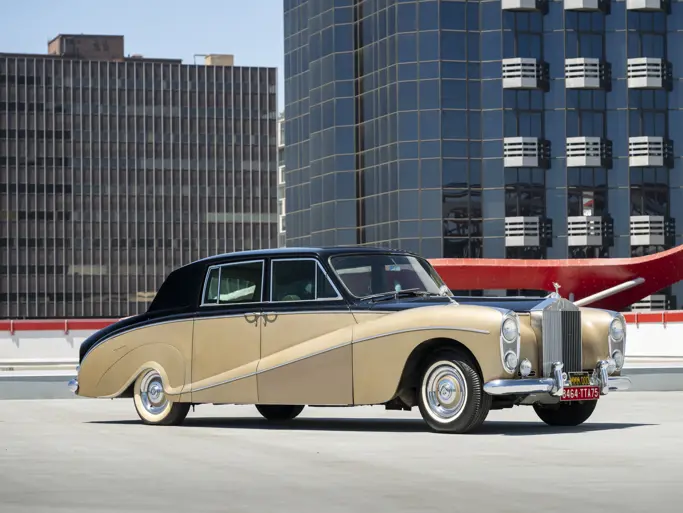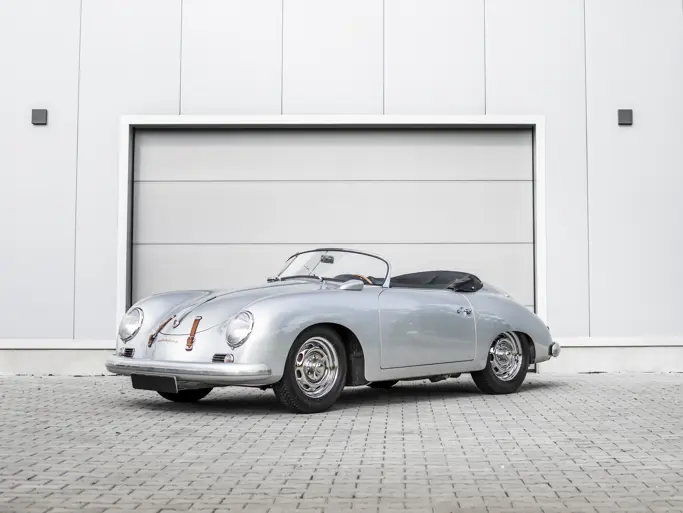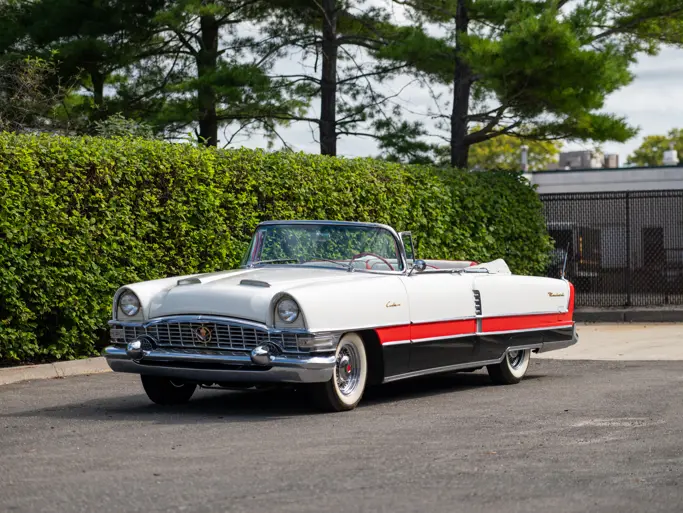Chassis no. 8413149400
Auburn Fall 2013
1961 Chrysler 300G
{{lr.item.text}}
$167,750 USD | Sold
 | Auburn, Indiana
| Auburn, Indiana
{{internetCurrentBid}}
{{internetTimeLeft}}

- 413-cid, 375-hp wedge OHV V-8 engine
- Three-speed Torqueflite automatic transmission
- One of six known black 300G convertibles
- Many desirable factory appointments
- Documented by the 300 Registry
- One of 337 300G convertibles
Model RC-4-P. 413-cid, 375-hp wedge OHV V-8 engine, three-speed Torqueflite automatic transmission, torsion bar independent front suspension, live rear axle with semi-elliptic leaf springs, and four-wheel power hydraulic drum brakes. Wheelbase: 126-inches
Chrysler’s new C-300 created a sensation in 1955. Based on the New Yorker hardtop coupe, it had front sheet metal and grille from the Imperial and the most powerful engine in the company catalog, a 331 cubic inch hemi V-8 with dual four-barrel carburetors, a racing cam and solid lifters. At 300-hp – from which it took its name – it was the most powerful American passenger car engine. For 1956, a new 300B model began the “letter series” that would continue for a decade.
A convertible was added with 1957’s 300C, featuring full leather interior and the new corporate styling. This year marked the debut of the round tri-color “300” emblem, emblazoned prominently on the rear quarter panel. The Hemi engine now displaced 392 cubic inches and developed 375 horsepower, or 390 with optional dual-quad carburetion. Smaller, 14-inch wheels gave a lower profile.
The letter series progressed alphabetically, the 300D for 1958 experimenting (unsuccessfully) with fuel-injection and 1959’s 300E switching to a 413 cubic inch wedge engine. The 300F in 1960 introduced ram induction and horsepower soared to 400. The wedge engine was continued for 1961 with the 300G, and the front end was restyled, reshaping the grille and mounting the headlights in slanted formation. A three-speed manual gearbox was made available for racing applications.
One of six known black 300G convertibles, this car is equipped with swivel seats, power steering, power brakes, power windows, console tachometer, windshield washers, rear bucket seats with console, Sure-Grip differential and a pushbutton radio. Additionally, this example has been documented by the 300 Registry.
Contours and paint are excellent, and the brightwork is very good, but for some aging around the vent windows. The tan interior shows some use, while the black carpet, with a silver waffle insert at the driver’s feet, is intriguing. The Cross-Ram engine is detailed very nicely in red, copper and black, while the undercarriage is clean and painted matte black. Goodyear whitewall tires are mounted on the chrome Kelsey Hayes wire wheels.
The “G” edition of the 300 Series is considered by many to be the last of the great letter-series cars. From 1962, the 300H and its successors shared a platform with the cheaper 300 Sport series, based on the Windsor, which siphoned off many of the letter series’ customers. Gone, too, were the fins of the ’50s and early ’60s, blunted in the corporate purging of Exner’s influence. This has helped solidify the 300G’s status as one of the most collectible cars of the 1960s. These special cars have continued to appreciate in both value and enthusiasm, as they are distinctive to look at and fun to drive. This car, one of 337 300G convertibles built, demonstrates why this is so.





